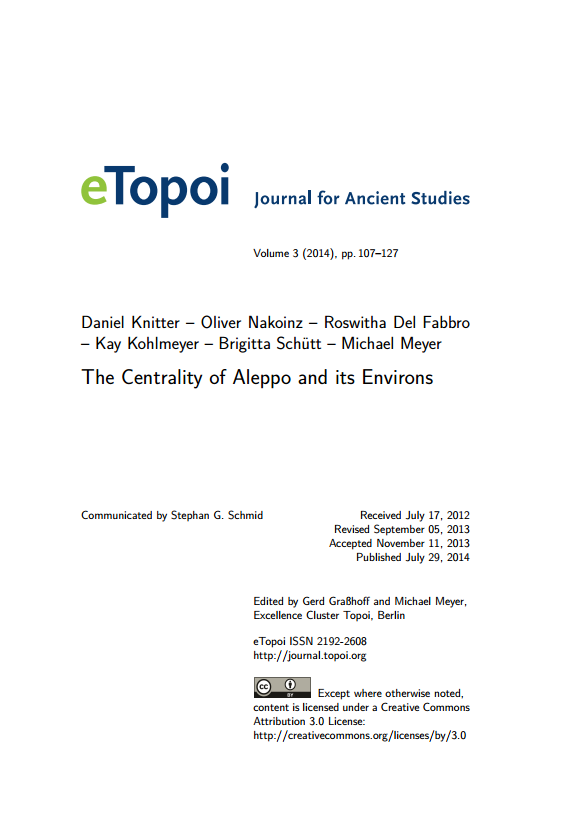The Centrality of Aleppo and its Environs
This study analyses the relationship between Aleppo and settlements in the city’s hinterland based on spatial statistics. A theoretical extension of the term central place is used in reconstructing Aleppo’s central character. Locally the city served as a centre for trade, exchange, and cult activity. In a regional and supra-regional context, advantages deriving from the topographic location led trade, exchange, and craft to take on different functions. This study demonstrates that, in constrast to other important cities in the ancient Middle East, Aleppo could maintain its long-lasting significance as a central place due to the combination of different functions.
Die Studie analysiert anhand räumlicher Statistik das Verhältnis zwischen Aleppo und den die Stadt umgebenden Siedlungen. Auf Basis einer theoretischen Erweiterung des Begriffs “Zentraler Ort’ ist es möglich, Aleppos zentralen Charakter darzustellen. Die Stadt diente als lokales Zentrum für Austausch und Kult. Im regionalen und überregionalen Kontext profitierte die Stadt von ihrer topographischen Lage, die Funktionen des Handels und Handwerks konzentrierte. Die Kombination der zentralen Funktionen Aleppos auf verschiedenen Skalen kann als Grund für die diachrone Bedeutung des Ortes, im Vergleich zu anderen Städten des mittleren Ostens, verstanden werden. Die Studie zeigt, dass diese Kombination aus Funktionen der Grund dafür war, dass Aleppo, anders als vergleichbar wichtige Städte im Mittleren Orient, seine zentrale Bedeutung langfristig sichern konnte.

